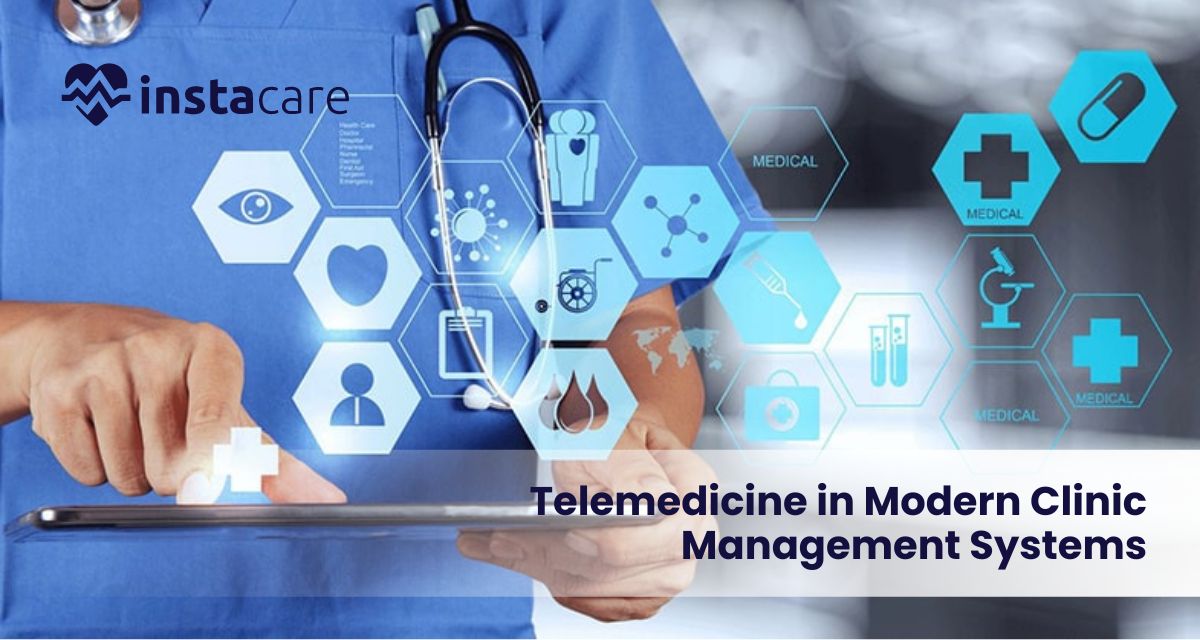Last updated on Thursday, 12, September, 2024
Table of Contents
The Role of Telemedicine in Modern Clinic Management Systems
Among other disruptive innovations in recent years, telemedicine has turned upside down the management of clinics and access by patients to interventions. Just think about a patient who can consult with a doctor from the comfort of his house and avoid a long waiting in a crowded waiting room; this is not a dream, it’s the reality developed by telemedicine. Technical requirements of telemedicine develop the opportunity to get integrated into the modern healthcare system through streamlining the services in the clinics. However, there exists a dire need of understanding the concept of telemedicine, benefits, challenges, and thus, what the future holds.
Understanding Telemedicine
In simple language, it means the use of technology in delivering clinical health from afar. It includes everything from simple consultations on the phone to comprehensive video. This model allows health professionals to access their patients irrespective of their location, which improves their access to medical care immensely.
Key Features of Telemedicine
Following are some of the key features of telemedicine that go a long distance in improving the patient experience and the functioning of a clinic:
- Virtual Consultation: The term simply means that one consults his doctor through video calls for convenience, enabling one to get care without necessarily having to make a visit to the clinic. In this regard, remote monitoring will facilitate continuous monitoring of patients suffering from any chronic condition with wearable devices and mobile applications. This also facilitates proactive management of their health.
- Access to Specialists: Distance would mean little in such aspects as consulting specialists, since it covers distances for patients unable to consult specialists due to geography or other reasons without the added burden of travel.
- Cost-Effectiveness: The method does reduce travel costs and time for both patients and health professionals; hence, this would be most effectively making healthcare more accessible and time-effective.
Integration of Telemedicine in Clinic Management Systems
The present-day clinic management system has been designed in order to assist the administrative, patient data, and billing-related tasks to be managed in an organized manner. The integration of telemedicine into the same would tend the clinics to be in a better position in accomplishing functionality on many more counts besides being able to cater to the patients in a better manner.
Advantages of Integration
- Smoothening of operations: Once telemedicine gets integrated into the CMS, appointment scheduling, follow-up of patients, and maintenance of records all become quite smooth and easy. This efficiency frees up more time for the staff since there are less administrative burdens; staff can then be more caring for their patients.
- Improved Patient Convenience: This in itself improves the experience of patients in seeking home care. One need not worry about long waits in the clinic or taking time off from work. Appointments are easily attended to in comfort.
- Improved health outcomes: Through regular monitoring and timely follow-ups, telemedicine will offer better management of chronic diseases, reduce hospital admissions, and thus improve health outcomes in general.
- Data Management: Telemedicine generates a great amount of data; this, integrated with CMS, enables clinics to do better analyses of the patient trends and work toward positive modification of the care protocols for improved outcomes in patients.
- More Significant Revenue Streams: With telemedicine services, the clinic is afforded the chance to take more patients on board without the use of space. This may lead to increased revenues while catering much-needed care to more patients.
Challenges of Telemedicine in Clinic Management
Though these benefits are considered significant in number, there have been certain challenges that must be overcome if telemedicine is to find appropriate alignment with clinic management systems.
Compliance and Regulatory Issues
Telemedicine faces different regulations that may be very different from region to region. They have to take into consideration a lot of complicated legal issues for clinics to make sure they follow the laws of patient privacy and licensing. This might get particularly tricky for those operating their services across state or national lines.
Technology Barriers
Not all patients have access to the technology that such services require, let alone reliable connectivity to the Internet. This creates a digital divide in access to care, and for this reason, clinics should begin seeking solutions that will help in realizing equity in the health care provided.
Resistance to Change
It is generally true that change is quite scary, more so to the health facilities that have been in operation for many years. A few health professions may not embrace the idea of telemedicine because they are conversant with other technologies or have no faith in the technology. Thus, substantial training and continuous support would be required to overcome any such resistance.
Quality of Care Concerns
Debates are gaining momentum amongst experts whether telemedicine could assure a level of care equivalent to what is received during clinic visits. For that, the clinics need to establish protocols and guidelines that guarantee telemedicine consultations meet high standards of quality in order to maintain the quality of care the patients expect.
The Future of Telemedicine in Clinic Management
The future of telemedicine in clinic management systems is bright and is going to be shaped by a variety of trends.
Artificial Intelligence and Machine Learning
AI and machine learning are already being incorporated into the telemedicine platform in the hope of creating an utterly new model of patient care. The technologies analyze massive volumes of patient data, predict health outcomes, and provide personalized care plans. It is a level of sophistication that opens up the possibility of such a service being more efficient and effective.
Wearable Health Technology
Wearables are increasingly deployed in service to monitor vital signs and health parameters. The integration of such data from wearables into clinic management systems allows practitioners to track patient health status in real-time. This capability allows for timely interventions, thereby improving patient outcomes.
More Emphasis on Mental Health
However, telemedicine proved to be of particular service in the case of mental health provisions by dissipating stigma and making access to care easier. Considering this, the expansion of telehealth service offerings in clinics in the future is most likely to be in this domain since good mental health is considered an integral part of general good health.
Conclusion
Telemedicine opened wide avenues of benefits to modern management systems of clinics for improved patient care and operational efficiency. In the future, with continuously changing technology, telemedicine in healthcare will extend further to meet the challenges of improvements in access and quality of care. Embracing this kind of change will be paramount for the clinics desirous of thriving in the ever-evolving landscape of healthcare. It all boils down to placing the patient at the very core of care and opening up avenues for clinics to use telemedicine to help develop a brighter, healthier tomorrow.
FAQs
What type of services can I offer through telemedicine?
These services range from virtual consultations to follow-up visits, monitoring of chronic conditions remotely, mental health counseling, and health education. This greater capacity makes it quite useful in current health service delivery.
How might a clinic ensure security about patient data in telemedicine?
The clinic should invest entirely in cyber security measures like encryption, secure access, and routine audits. Of course, where the regulations like HIPAA exist in the United States, strict adherence to them is paramount with regard to patient information security.
Is telemedicine suitable for all patients?
While telemedicine has a lot of advantages, it is not something upon which all patients can rely. For those patients for whom manual examination or performance of procedures is required on them, the applicability of the services of telemedicine is just not there. This means that each clinic should make sure it carefully examines the needs of every individual patient to decide where applying telemedicine services shall be appropriate.



